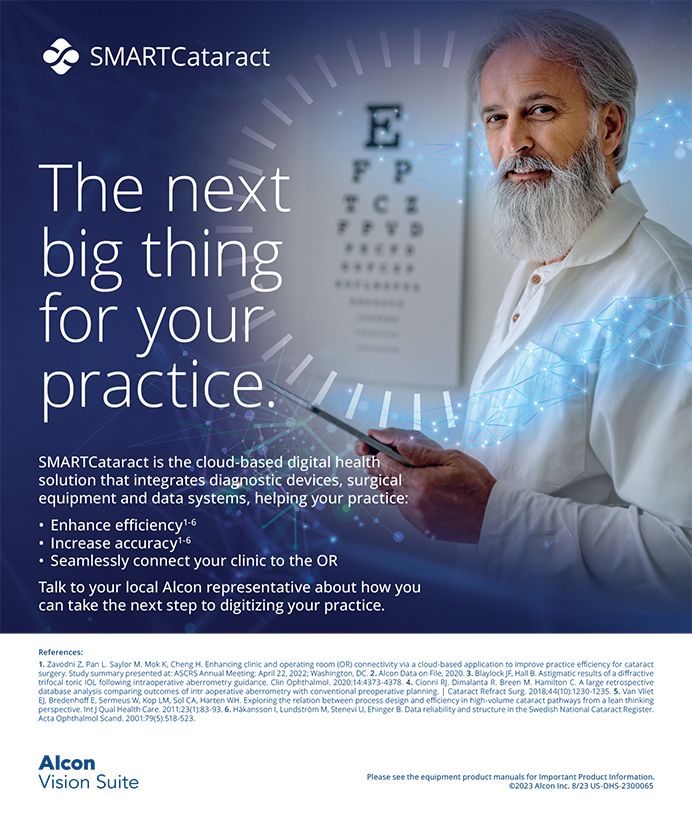
Lens and laser adjustability represent the cutting edge of our efforts to provide tailored, lifelong care to our patients. As we surgeons look ahead, it’s important for us to consider how these advances can shape our approach to treating various ocular conditions throughout a patient’s lifetime.
Traditionally, ophthalmic treatments have been designed to address an individual’s needs at a specific point in time. We evaluate a patient with dry eye disease, glaucoma, or presbyopia, for example, and devise a treatment plan tailored to their current condition. This approach, although precise and effective, is limited by its static nature. The patient’s needs and ocular health evolve, and our treatments must evolve with them. This is where the promise of lens and laser adjustability shines.
Technologies such as the Light Adjustable Lens (RxSight) allow us to customize vision correction with unprecedented precision. These lenses can be adjusted postoperatively to fine-tune the patient’s vision, offering a level of customization that was previously unattainable. This is just the beginning. The future holds even greater promise with technologies that provide ongoing adjustability. Imagine lenses or implants that can be modified as a patient’s visual needs change and modular lenses that can be exchanged as new technologies or patient requirements emerge.
The concept of lifelong adjustability isn’t limited to refractive corrections. I envision a future when we can adapt treatments for glaucoma and other ocular conditions in a dynamic, ongoing manner. For example, drug delivery systems such as the sustained-release travoprost implant (iDose, Glaukos) could be adapted to allow different medications to be loaded as the patient’s condition evolves. This adaptability helps ensure that treatment remains optimal throughout a patient’s lifetime.
Although these advances are exciting, they present significant challenges. One major concern is ensuring that high-tech solutions are accessible to all patients, regardless of their financial situation. As these technologies are developed, we must advocate for insurance coverage and financial models that allow broad access. We must strive to ensure that technological innovation does not create disparities in care. The potential for unequal access to advanced treatments could exacerbate existing inequalities. It is imperative that we work toward solutions that are inclusive and equitable. Additionally, we face the challenge of navigating regulatory environments and reimbursement structures that may not yet be equipped to handle these innovations.
Adaptability must extend beyond our treatment paradigms to our practice models as well. The landscape of health care is changing, with growing patient volumes and financial pressures. We need innovative practice models that can deliver high-quality care efficiently and sustainably. This will require continuous advocacy and collaboration within our professional community to influence policy and secure necessary resources.
The future of ophthalmology depends on our ability to adapt—both in terms of the treatments we offer and the way in which we deliver care. The technologies on the horizon promise a new level of personalized, lifelong care that could significantly enhance patient outcomes. As we embrace these advances, we must remain vigilant about ensuring accessibility, advocating for supportive policies, and continuously fine-tuning our practice models to meet the needs of our patients.




